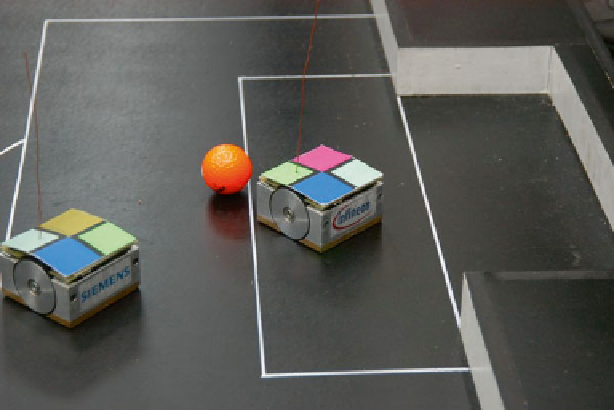Environmental Engineering Reference
In-Depth Information
5.5
Robotsoccer
Robotsoccer is played in teams by small mobile robots (see Fig.
3.5
). It was fi rst
introduced about two decades ago to develop intelligent cooperative multi-robot
(agent) systems (MAS) and as an easy means of the young generation learning
about diffi cult scientifi c and engineering subjects through games. From the scien-
tifi c viewpoint the soccer robot is an intelligent autonomous agent which carries out
tasks with other agents in a cooperative, coordinated and communicative way.
Robotsoccer has generally proven to be a good test bed for the development of MAS
tools. In addition, a number of people fi nd it enjoyable and this makes it a useful
educational tool (Kopacek
2009
). Soccer robots should be programmed to play ethi-
cally, i.e. a hard but fair game, and not try to cheat or commit fouls. It is also impor-
tant to examine the potentially negative impacts of Robotsoccer. It seems unlikely
that playing Robotsoccer will replace actual involvement in sports but could substi-
tute for watching soccer and other games. The latter effect, if it occurs, could have
a negative impact on soccer and other teams.
5.6
Networked Robots
Robots with an Internet connection are a precursor stage for cloud robots. This will
permit access to Internet-based resources as well as both human-robot interaction,
including for operation at a distance, and robot-robot interaction, including for data
Fig. 3.5
Robotsoccer

Search WWH ::

Custom Search